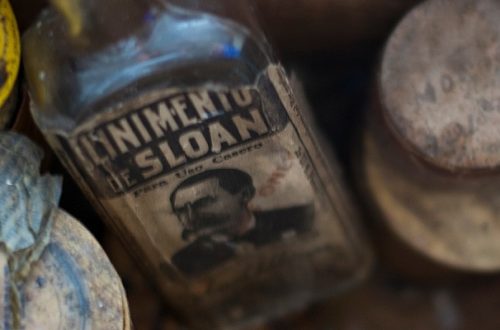
DEFINITIONS
Please find below a selection of definitions of various medical and biological terms found throughout this publication.
Analgesic
Medication or substance which reduces pain.
Anti-biotic
This is a substance that kills or inhibits the growth of bacteria, which is commonly used in medicine to fight infections. With the terrain theory gaining momentum it is suggested that the bacteria are actually there to eat toxins and save the host, so it is better to clean the environment rather than kill the bacteria. In some extreme instances a combination of both treatments may be necessary however to bring back equilibrium.
Anti-carcinogenic
This is a substance that inhibits the growth of, of kills off, cancer cells. Similarly as mentioned in the anti-biotic section, cancer is considered to be the bodies last attempt to try and contain excessive toxins which otherwise would poison the body. So I tend to look for ‘anti-carcinogens’ that actually starve off rather than kill off cancer cells, or the toxins will just create another means in the body of storing them.
Anti-inflammatory
Anti-inflammatory is the property of a substance or treatment that reduces inflammation or swelling. Anti-inflammatory drugs, also called anti-inflammatories, make up about half of analgesics.
Anti-microbial
These are substances which inhibit or kill of micro-organisms such as bacteria, fungi, molds, viruses and mildew. Anti-Biotics are one form of Anti-microbial.
Anti-oxidant
These substances prevent the process of oxidation (see definition below) and protect the cells from the free radical damage that oxidation can cause.
Anti-thrombotic
Drug or substance that reduces the formation of blood clots, used as a treatment or preventative.
Anti-viral
The mainstream view is that Anti-virals either kill off or inhibit the replication of viruses in the body. Terrain theory states that viruses don’t exist but are a by-product of the body cleansing itself from toxins. Either way, anti-virals do seem to reduce the symptoms of viral infections, so whether they kill off a virus or simply help to clean out the toxins, they appear to be effective in restoring wellness.
Apoptosis
This is a biochemical event that leads to programmed cell death in multi-cellular organisms.
Astringent
Draws the tissues together, binds and contracts.
Binder
A substance that absorbs or adsorbs toxins such as heavy metals in the body, assisting in their elimination via the colon.
Cardioprotective
A substance that protects the heart.
Cation
A positively charged ion or group of ions in a solution which migrate to a negatively charged ion. This process is utilized sometimes in the process of binding toxins in the body to remove them via elimination.
Chelator
Originating from the Greek word ‘Chele’ for claw, a chelator is a substance that binds toxic heavy metals from the body, and carries them out through the liver for elimination.
Conjugate
Joined together in pairs
Cytokine storm
Cytokines are pro-inflammatory signalling molecules, and a storm happens when they are released suddenly and uncontrollably, which can cause organ failure and death.
Decongestant
A substance which helps to remove congestion in the nasal and respiratory tracts.
Diuretic
This is a substance which draws water out of the body through the kidneys, increasing urine.
Endogenous
Endogenous substances and processes are those that originate from within a system such as an organism, tissue, or cell. Exogenous substances and processes, which originate from outside of the organism, such as drugs, contrast with endogenous ones.
Erythrocyte
See Red blood cells
Excitotoxicity
Certain neurotransmitters are necessary but if they become too high, they can create toxicity and excess stimulation, resulting in damage and death to nerve cells.
Expectorant
Draws water into mucus, allowing the respiratory system to increase secretions.
Graphene oxide
This is a conductive carbon substance which has reportedly been found in various medical interventions including the inoculation. There are many reports in alternate media that this substance is contributing to the health crisis known as Covid 19.
Hepatoprotective
Protects the liver from damage.
Herxheimer
When detoxification happens in the body, mobilization of toxins can happen more quickly than the body’s elimination pathways can carry it out. This may cause temporary symptoms such as nausea, headaches and lethargy. While a mild level of this reaction is common, severe reactions may indicate the need to slow down the process so the body can heal itself.
Immunoregulatory
Regulates the immune system.
Immunotherapy
This is the treatment of disease where the immune system is prompted into the activation or suppression of the immune response.
Lipids
Lipids are a class of molecules in the body that include hormones, fats, oils, and waxes. They are essential to your health, but they can also contribute to disease.
Mucolytic
Breaks down mucus to allow for easier elimination from the airways and lungs.
Nano adjuvant
Adjuvants are substances of a nano size that are used to carry materials deeper into the body, such as in vaccines. Graphene Oxide has been studied as an adjuvant, and is reported to be in the Covid Quaxxines to carry them beyond the usual localized area in the injection site.
Neuroprotective
Preserves the structure and / or function of neurons.
Oxidation
Oxidization is a chemical reaction that damages or kills off pathogens. This may be used productively to reduce poisons in the body, but it releases free radicals in the process which can damage healthy cells. So this process needs to be done with care, and with education and guidance from health professionals.
Phospholipids
Phospholipids make up the outermost layer of cells in the bodies of both animals and humans. They create a protective layer around the cells to help maintain them.
Radioprotective
Protection against the harmful effects of radiation
Platelet aggregation
The clumping together of platelets which leads to blood clots. This is useful when the body has been injured and excessive bleeding needs to be halted, but can be harmful when clots occur in the blood vessels and arteries, leading to thrombosis, heart attacks and strokes, depending on where the clots are.
Platelets
Platelets, also called thrombocytes, are a component of blood whose function is to react to bleeding from blood vessel injury by clumping, thereby initiating a blood clot.
Red blood cells
The most common type of blood cell are the red blood cells, which oxygenate body tissues via the circulatory system.
Sterols
Sterols are a subset of steroids, a type of hormone, of which the main one in humans in Cholesterol. Cholesterol is processed in the liver and contributes to many critical body functions. They include the making of hormones and vitamin D, as well as bile salts that work on fats so they can be absorbed by the cells.
Thrombin-inhibitors
Thrombin is the substance that creates blood clots. Inhibitors therefor prevent the clumping or coagulating of blood that which lead to blood clots and similar thrombotic activity.
Thrombocyte
See Platelets
Titrate
This relates to the percentage of a substance in solution. In regards to medication, to ‘titrate the dose’ means to begin at a lower dose and gradually increase the dose of any given medicine, to reduce unwanted side effects.
Trace minerals
Part of the raw base materials our cells use to build or create anything in the body on a microscopic level. They are used to catalyze reactions, produce everything from new tissues to energy and are also required as co-enzymes for the absorption of other nutrients like vitamins.
Triglycerides
Triglycerides are the fats and oils that you are familiar with in foods. This type of lipid can be saturated or unsaturated, which is part of what makes them solid or liquid, respectively, at room temperature.
WHERE TO NEXT?




